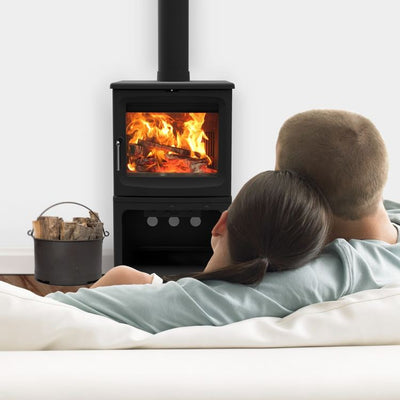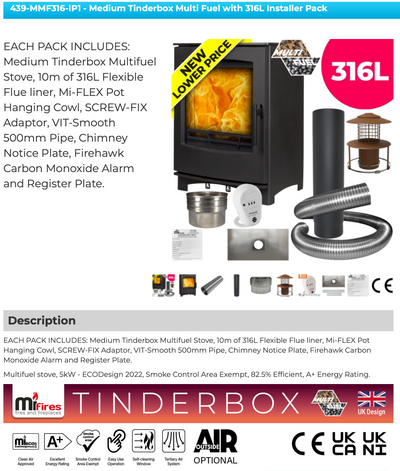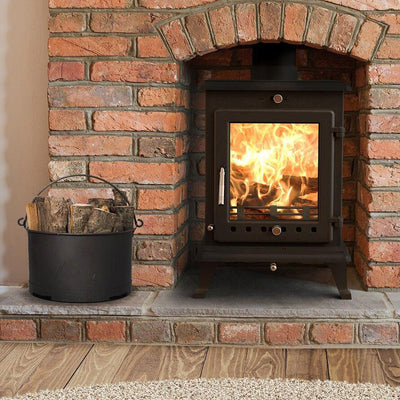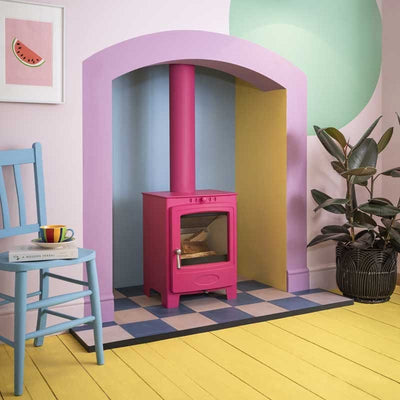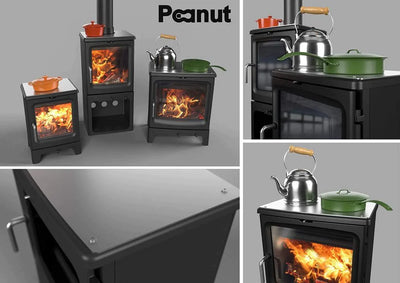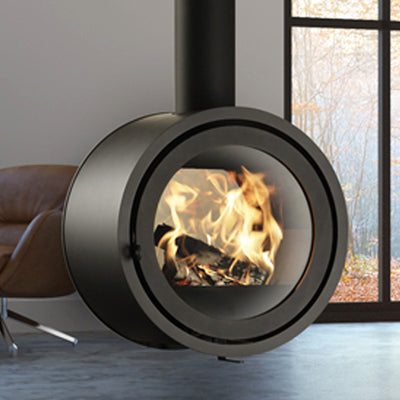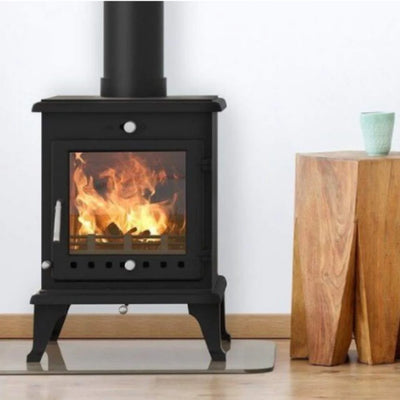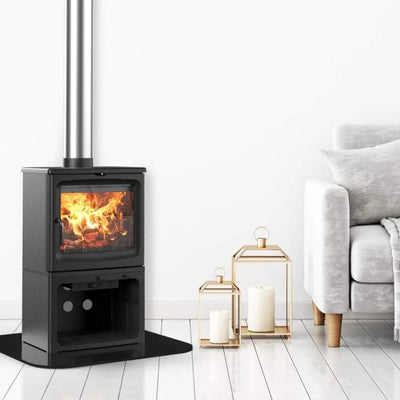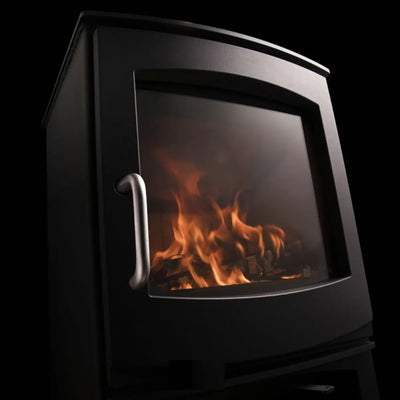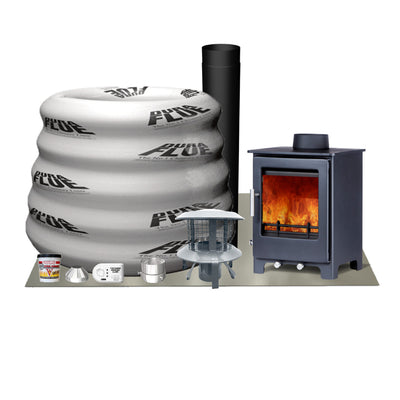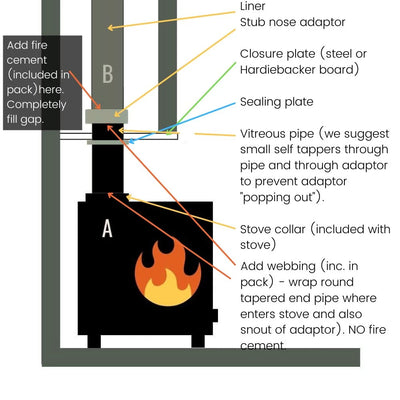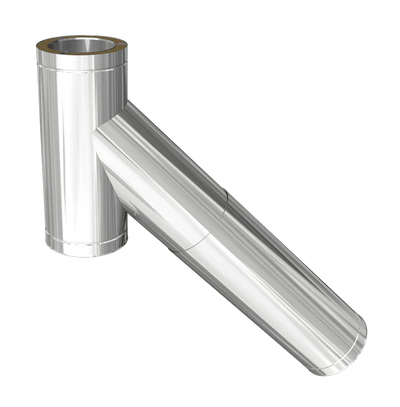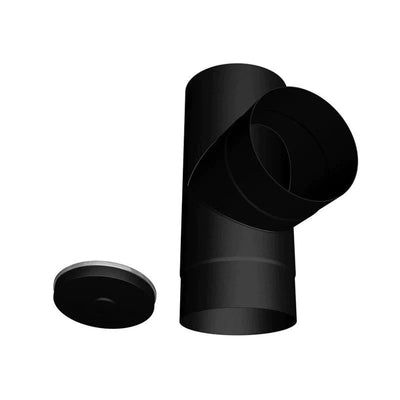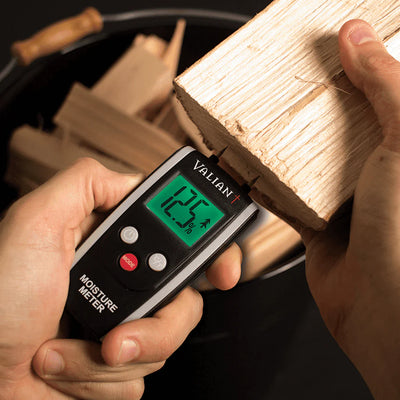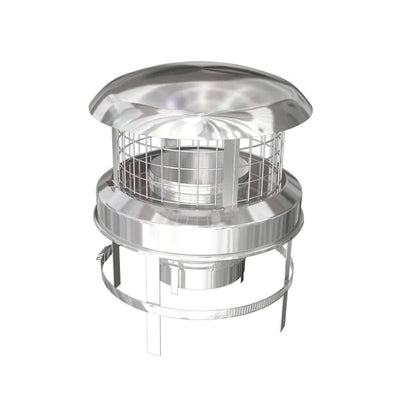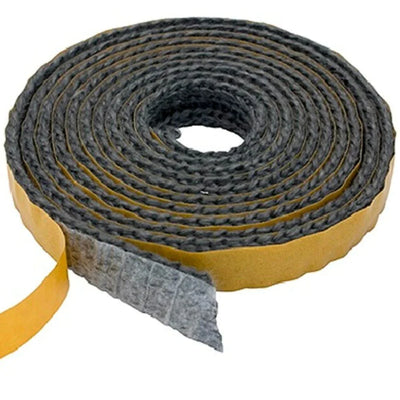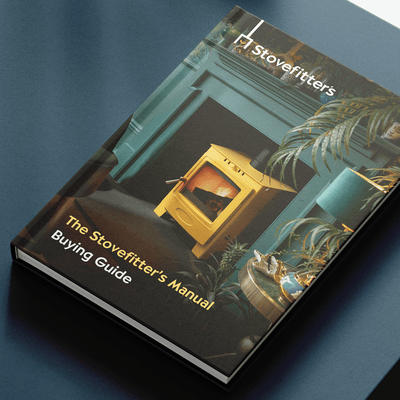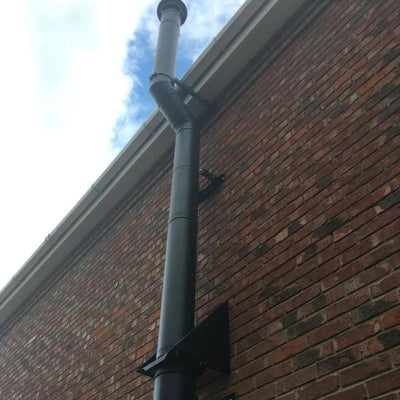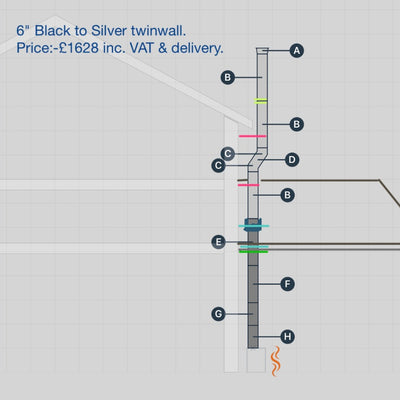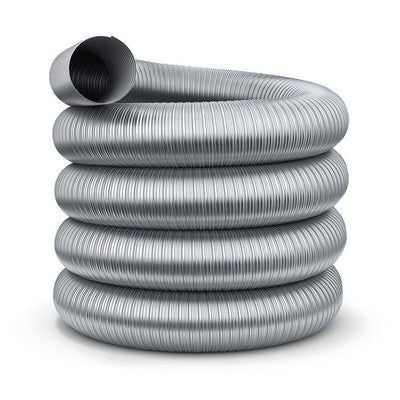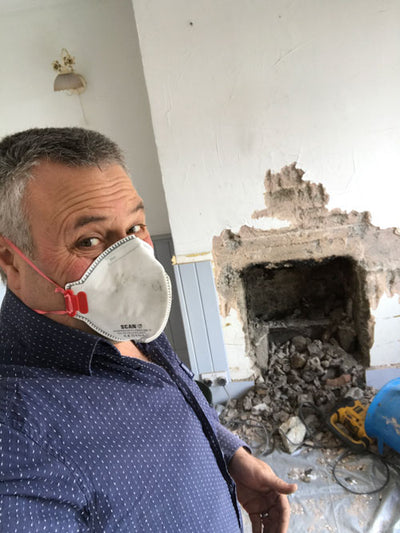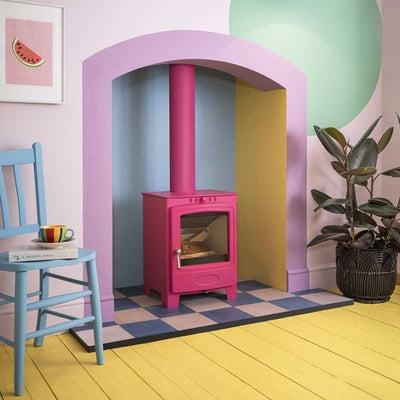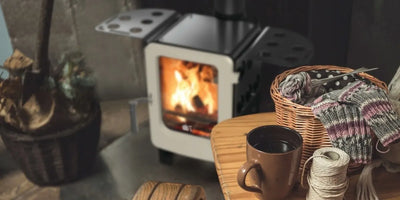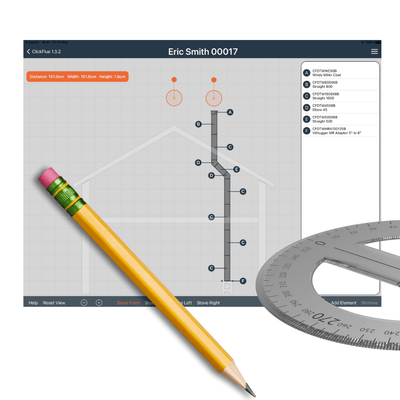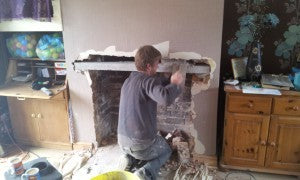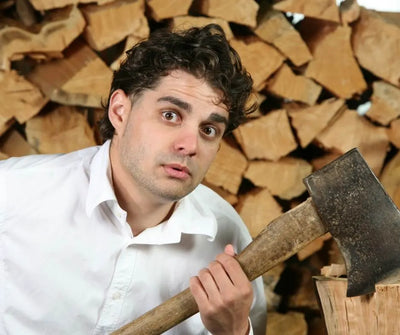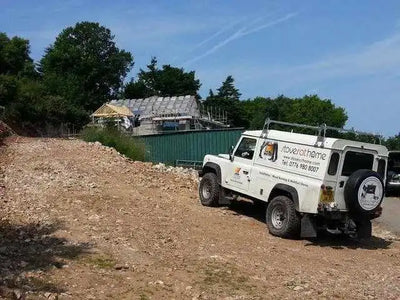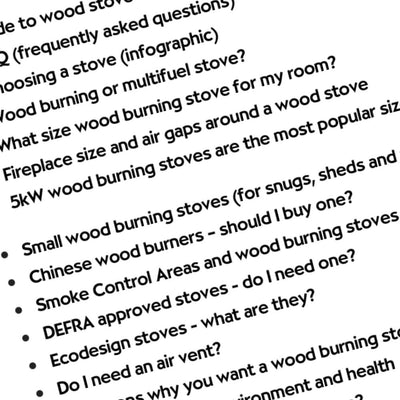What size wood stove do I need? Don't let manufacturers fool you!
5 mins
What size wood stove do I need? Don't let manufacturers fool you!
- How can one 5kW stove be much smaller than another?
- How then do I get this right?
- What are the manufacturer's not telling us?
- Forget about kW's and check the size of the firebox! Read on...
Quick answer
To discover what size wood burning stove you need, measure your room and divide by 14 (so length x width x height in metres, divided by 14). Divide by 10 if your room is particularly poorly insulated. Divide by 25 if your room is new-build super-insulated. I still recommend reading the rest of this article ;) Whether it's a small wood burning stove or a large log burner, Stovefitter's Warehouse have something for everyone.
Manufacturer's figures

Manufacturer's figures
Why not use our stove sizing gizmo?
Stove heat output is measured in Kilowatts (kW) and the figures usually provided by stove manufacturers are “nominal heat output”, “maximum heat output” or both (nominal is often provided, means a wishy-washy average, and is very dubious – see below).
Stove efficiency is different and is measured in % terms (how much heat emits from the stove after the rest goes up the chimney so as a rough guide a stove with 75% efficiency loses 25% up the chimney).
Sticking to basics, the amount of heat a stove gives out is determined by how much wood is burned and for what period of time.
So the physical size of the firebox determines the maximum heat output of the stove, for a particular period of time, when comparing one stove against another stove.
Nominal heat output

Nominal heat output
Why not use our stove sizing gizmo?
The problem here is that in the UK the manufacturer gets to specify the nominal heat output they desire. The testers check that the nominal is “possible” with a sensible amount of fuel. It is obvious from this that the figures can be played with. Hence why “5kW stoves” can have wildly different firebox sizes. Why might a manufacturer want a stove to be advertised as 5kW when maybe he can add an extra log or two and call it 8kW? Because, due to building regs, stoves 5kW or less often do not have to have an air vent in the room (which is a selling point). Also, it is quite tricky deciding how much wood a stove can reasonably take: three small logs might be perfect whereas five small logs has a small risk of one falling out when you open the door. Taking this further one might be able to get seven small logs in with even more risk of making opening the door a little fraught. Who decides what is a reasonable loading here?
My advice: If you are in a stove retail-outlet and looking at stoves (before popping back here to check our prices of course), then take the manufacturer’s stated kW as a guide only.
COMPARE THE SIZE OF THE FIREBOX WITH OTHER STOVES AND THINK ABOUT HOW MANY LOGS A STOVE WILL REASONABLY HOLD.
Some manufacturers provide such figures as “3-6kW” or “5-7 kW”. In other words, they provide a minimum to maximum output. I quite like this as it at least shows you what top performance you will get if you come over all “Casey Jones” one evening (you’ll not even begin to understand unless you once had a black and white TV).
"If you are in a stove retail-outlet and looking at stoves (before popping back here to check our prices of course), then take the manufacturer’s stated kW as a guide only. Why not use our stove sizing gizmo?"
Julian Patrick: site owner and author of The Stovefitter's Manual
How many kW do I need?
Why not use our stove sizing gizmo?
If the external air temperature is zero degrees then then you will need about 1kW of heat for every 14 cubic metres of space in a house with average insulation and double glazing.
In order to calculate how many kW are required to heat your room, measure the width, length and height of your room and then multiply the three measurements together, i.e.
Width 4m x Length 8m x Height 2.8m = 89.6m3 (room volume).
Then:
- If your room or house is new build and fitted with very good insulation then divide the room volume by 25.
- If the room has average to good insulation then divide the volume by 14.
- If the insulation is poor or non existent, then divide the rooms volume by 10.
Now forget about kW
Why not use our stove sizing gizmo?
In our example above, the room is fitted with average insulation so we divide the rooms volume by 14 and the kW requirement is shown to be 6.4kW.
89.6m3 (room volume) / 14 = 6.4kW
If you have two rooms with an arch in between then treat the situation as one room. If your room is open to upstairs then it really is “finger in the air” stuff. In the case of an open staircase to upstairs I would usually add 10-20% to your kW requirements figure due to heat that will “escape” upstairs.
Now forget about kW and look how big the firebox is compared to other stoves as this makes a lot of sense :)
Something else worth bearing in mind when thinking about what size wood burning stove to get is whether or not you want the stove to heat the room without any assistance. If you have a 2kW radiator in the room and it will “always be on” then that 7kW stove can be reduced down to a 5kW stove. Personally I think it best that the stove can work alone to heat the room so that the central heating can be turned off to save energy costs. But some people will treat the stove as “an aesthetic addition” and in this case one can take other heat input into account.
Personally I would go larger than I think I need rather than risk it when it comes to evaluating what size wood burning stove.
Remember: you CAN burn anywhere between 0-8kW worth of wood in an 8kW stove.
Now forget about kW and look how big the firebox is.
Is a room air-vent required above a certain size?
Why not use our stove sizing gizmo?
Bigger than 5kW (nominal) and you always need an air vent (building regs). You need an air vent anyway (for all stoves) in a new build or any property that is fairly airtight (see “Do I need an air vent?“). BUT if you do not want an air vent and are not in an airtight property and a 5kW looks borderline for output – just buy the biggest 5kW you can find. As an example, the DG Ivar 5kW is far larger than the 8kW Ekol Clarity. Darn silly testing procedure ;)
What if the room measurements suggest a tiny stove?
What if your room suggests a 3kW or 4kW stove but you feel these "look a little small" and require logs being cut smaller than you would like?
Never worry about going a little larger than the figures suggest (in this case consider a 5kW).
"But will I not be too hot? I don't want Grandma stripping off to her underwear!".
It is not quite that simple. If you burn just one twig in an 8kW stove then you will not get 8kW of heat. It is the amount of wood being consumed that dictates the heat. You can happily burn 2, 3 or 4 kW of wood in a 5kW stove.
Some will tell you that having too big a stove causes black glass and incomplete combustion. This is not really accurate. Such a problem only materialises if you fill a stove with fuel causing the dog/grandma/wife to overheat. So you then turn the stove down to a slumber. It is this slumbering that causes black smoke and blackened glass (and is also bad for the environment). What you should do is add a smaller fuel load and "burn it well". If you buy TOO big a stove the only problem you might have is that the floor area of the stove is large and the logs may have trouble "staying together" (rolling away from each other). This will only be a minor irritation.
Small can be cool by the way. Check our selection of 3-5kW smaller stoves
What size wood burning stove will your room require?
Why not use our stove sizing gizmo?
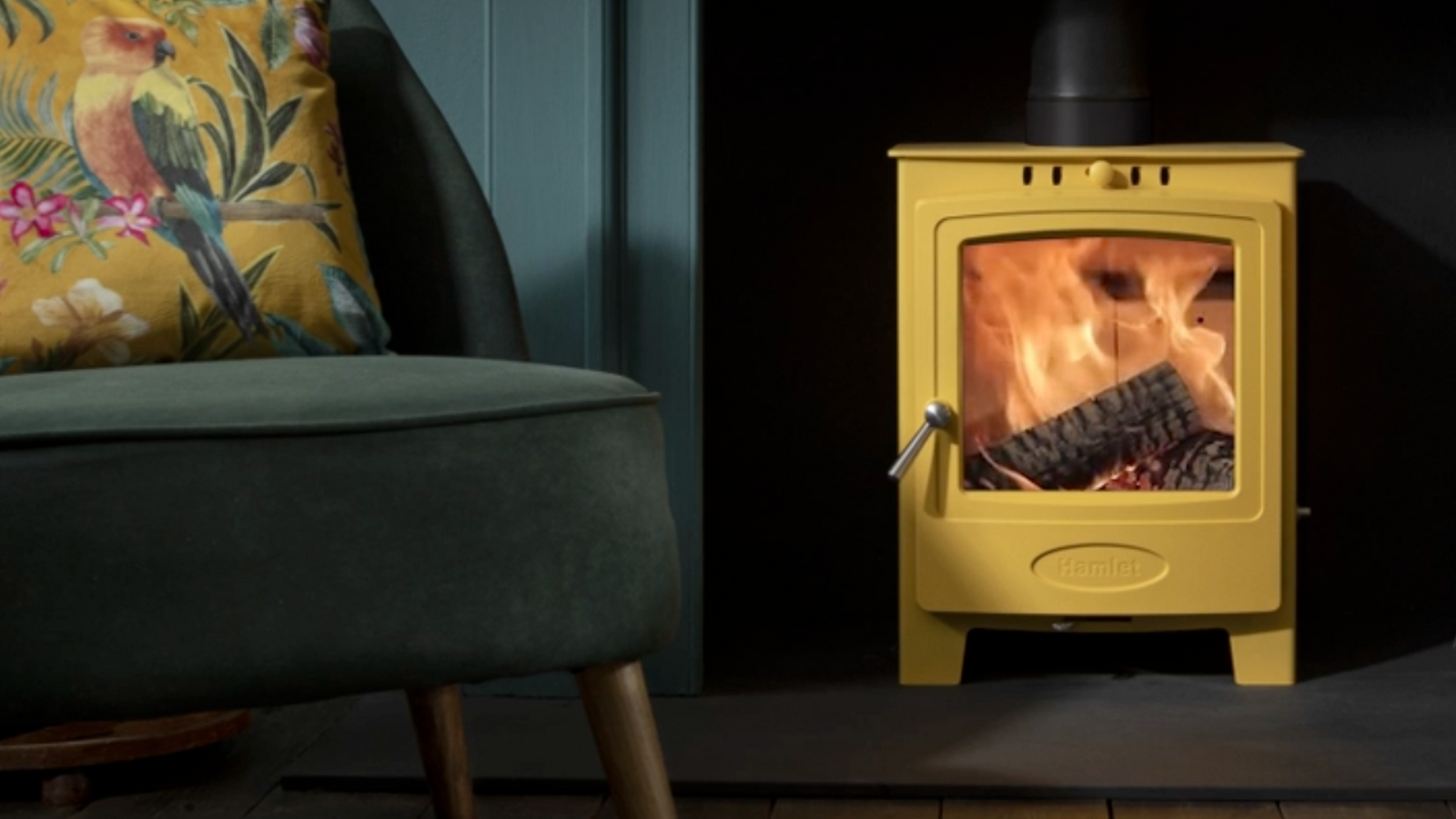
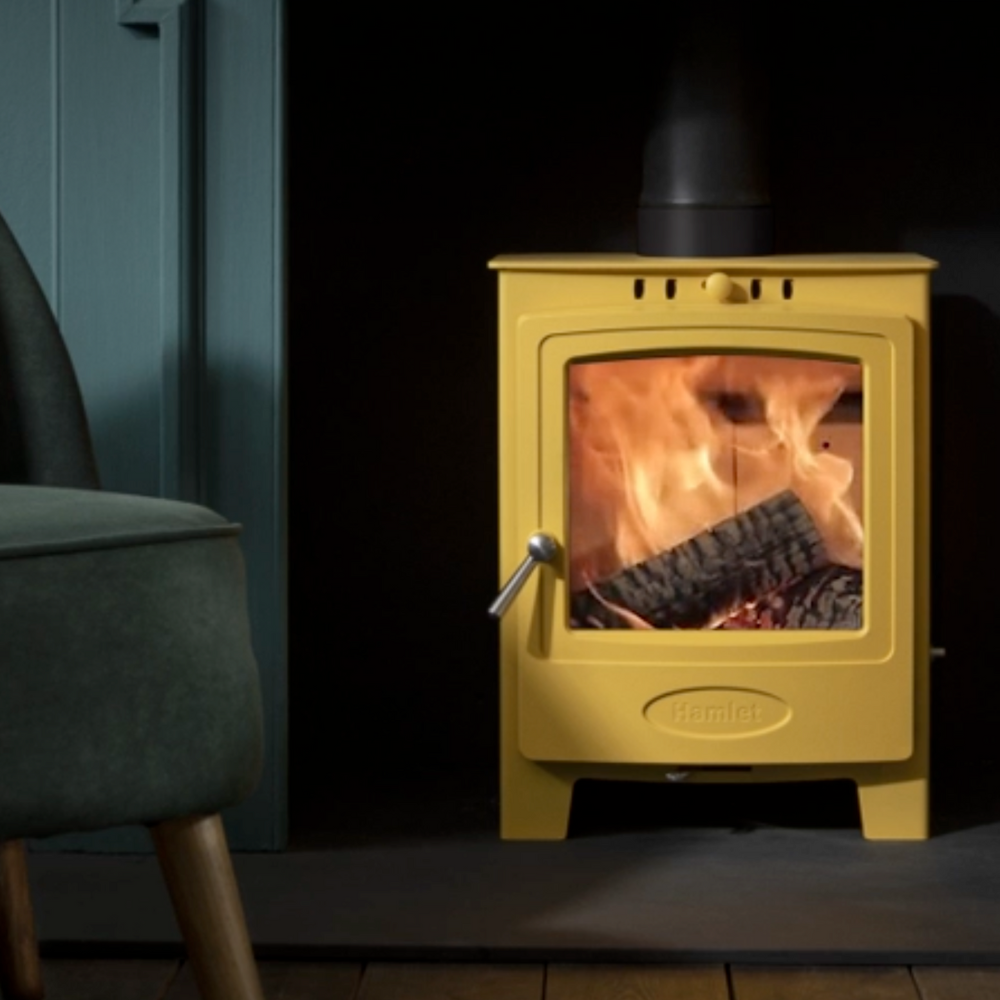
Installing a twin wall chimney what do I need?


Installing a stove in a fireplace - what do I need?
FAQs
See all FAQsCosts correct as of April 2023:
Approx. costs if you have a chimney and fireplace ready to use: £750-£1,000 (save £500 by self-installing).
Approx. costs if you have a chimney but need the fireplace "opening up": £1,600-£2,200 (save £1200 by self-installing).
Approx. costs if you do not have a chimney and need a clip-together flue: Shed £475-£700. Bungalow £1500. 2-storey house £2500. Save £1,000-£1400 by self-installing.
Above figures include labour and materials but no appliance.
We, of course, advise you to purchase your stove and materials from Stovefitter's to ensure quality goods are installed (some installers use budget materials to increase margin). If you buy your stove from us (rather than your local small shop or installer) we have a lot more power when approaching manufacturer's with a warranty issue. Why is that? Because we buy many hundreds of stoves a year from these brands.
We do not fit stoves.
But we know a few who do!
Google: Hetas installers
Hetas are the trade body of registered UK installers.
Is the 5kW stove "Ecodesign ready" or "Ecodesign Approved"? Defra approved?
So you do not have to worry every stove we sell is approved by DEFRA and Eco-design certified. Every stove we sell can be installed anywhere in the UK. No need even to read further but feel free...
Stoves sold after 2022 will have to be so. Ecodesign stoves are the very latest models that have passed stringent environmental tests. Stoves already installed prior to the 2022 cut-off date are fully legal so don't worry if you have one of these (the rules are not back-dated).
All of the stoves we sell are Ecodesign approved.
Stoves do not have to be Hetas approved (Hetas is a private organisation for stove installers).
Most installations will require that you slide a chimney liner down your chimney (flexible metal tube 5" or 6" in diameter). Do you have a narrow chimney and want to lessen the risk that a liner might not go down your chimney? Then make sure your chosen stove can use a 5" liner.
Must I line my chimney? Best read this article but most likely the answer is yes. Do I have to fit a chimney liner?
DEFRA-Exempt wood burning stoves with a 5″ collar can usually be fitted to a five inch liner rather than the usual 6″ minimum, making the installer's job much less stressful.
ALL OF THE 5KW STOVES WE SELL CAN BE FITTED TO A 5" CHIMNEY LINER.
I seriously suggest any self installer fits a 5" liner unless they know their chimney is large enough for a 6"!
What is the best chimney liner? Silvacore 904 (we sell it so of course we will say that ;-). What is the best chimney liner?
Useful links
Will your stove require an air vent within the room (some stone walls are very difficult to drill)?
Because a fire consumes air from the room (sends it up the chimney) new air needs to enter the room to replace it. Otherwise a vacuum will be created and the stove will die down or underperform.
5kW or under and wood burning stoves often do not require an air vent as a room has enough natural leakage. More airtight new-builds always require an air vent.
It is easy to test if a stove is getting enough air: open a window a little and if the fire"springs to life" or "performs better" then an air vent is likely required. Rarely is a room so airtight that a 5kW stove requires a vent.
Useful links
What is the maximum output in kW of your "5kW" wood burning stove? The majority of manufacturers just specify the “nominal output” and this figure means very little in real life. The nominal is a figure the manufacturer chooses to sell the stove at - the stove is capable of reaching at least this output with one fuel load. Nominal means "capable of". But it is not the maximum.
Check out the size of the area where the logs will go (firebox size) as this varies enormously. The kW output is completely dependant on the amount of logs burning at any one time - more logs burning equals more heat. If you can fit three logs in stove A and just two logs in stove B then stove A will be capable of throwing out 33% more heat.
DO NOT TRUST MANUFACTURERS’ kW RATINGS as manufacturers specify what output they desire to sell the stove at and testing allows for much “playing with the figures”. This is why you can get very small 5kW stoves (e.g. Aga Little Wenlock) and very large 5kW stoves (e.g. DG Ivar 5 by Dik Geurts which is actually rated 5kW but has a MUCH larger firebox than the Ekol Crystal 5 by Ekol Stoves). A Crystal 5k might get to 5kW and not be capable of any higher whilst a DG Ivar, despite being rated at 5kW, can get to 8kW with a full fuel load.
Note that, over time, one might damage the internal firebricks of a stove by running at a higher load than the manufacturer's suggest. Firebricks are easily replaceable.
Useful links
Will your wood burning stove fit in your recess WITH the required air gaps around it? This is obviously not an issue if your stove will be freestanding.
Air gaps to non-combustible materials (brick, stone etc.) are usually "as close as you like" legally but manufacturers will sometimes specify a recommendation. This recommendation is there to allow heat to escape from the recess into the room - so you get the heat benefit rather than the heat soaking into the building structure and being lost. If no gap to non-combustibles recommended then we suggest 50-100mm air gap left and right of stove, 50mm behind and 100mm above.
Are you in a Smoke Control Area (usually built up areas)?
Choose your stove accordingly.
A stove must be DEFRA-Approved if you wish to burn wood in a smoke control area.
ALL OF THE STOVES WE SELL ARE DEFRA APPROVED FOR SMOKE CONTROL AREAS.
In simple terms if a stove has an efficiency rating of 70% then 30% of the heat from your logs goes up the chimney.
If a stove has an efficiency rating of 90% then only 10% goes up the chimney.
So think of this in terms of how many logs you have to chop/buy.
Example: A Saltfire Peanut 5 by Saltfire Stoves in Dorset has an efficiciency of 80%.
A tall chimney (6m or more) that is lined will be happy with an efficient stove.
Efficiency importance can be said to be overrated and anything between 75% and 85% is fine. Go much higher and performance can actually suffer (smoke in room when opening door to reload, blackening of glass).
Many modern stoves can go on 12mm thick hearths. Others require full, 5″ thick constructional hearths. All of the stoves we sell state whether or not a 12mm hearth is suitable.
Small stove in a shed, garage, gazebo etc? Choose a stove that go on a 12mm hearth. Then go to a builders merchants' outdoor yard (or slate/granite supplier but that will be expensive) and find a nice slab (best 20mm thick - 30mm thick) of 84cmx84cm (building regs says this is minimum for a freestanding stove not in a fireplace).
84cm x84cm seems too big? If your install is in a non-habitable location and you are not getting it signed off - do what you wish. We strongly suggest 30cm of hearth in front of the stove to catch any stray embers when you open the stove door.
Helpful links
Can you can talk to somebody on the phone should you need to after the wood burning stove has been delivered, especially if you are self installing? Will the staff at “wesellzillionsofstoves.com” be able to assist with any installation issues? What if there are any problems after install?
Do yourself a favour before ordering stoves or materials on the Internet: Go to Trustpilot and type in the company name before you buy. Some companies advertising at the top of search engines are not good news - check for yourself.
When striving to find thebest 5kW wood burning stovesyou will likely be bewildered by the choice. There are many to choose from. The question I get asked most in our shop is “why should I pay <£1,000> for this one when this other one is just <£500>?”. Here is the very simple answer:the cheaper wood stoves are made in Chinaor Eastern Europe whilst the more expensive are made in Western Europe (or sometimes the USA). Here are a few examples where a more expensive stove might excel over a cheaper stove:
- Aesthetics (more time spent on design)
- Hinges (sometimes hidden on more expensive stoves)
- Better quality glass
- Thicker steel (longer life)
- Improved door locking mechanisms
- Longer warranty
- Improved controllabilty of flame due to more resource invested on design of air flow within stove
- Brushed steel fittings instead of cheapy chrome look
Open and close the door on a cheap Chinese stove. Then open and close the door on a DG stove, Arada stoves, Woodford stoves, Hamlet stoves or Saltfire stoves. You’ll understand the difference.
Stove pricing reminds me of wine pricing. A £20 bottle of wine is not double the quality of a £10 bottle of wine (the drinking experience might be improved by 20% as an example). We are talking “the law of diminishing returns here. They are all “fire in a metal box” at the end of the day.
Yes. However, there are specific regulations and restrictions in place to address air pollution concerns, particularly in areas designated as Smoke Control Areas. In these areas, only approved "smokeless" fuels or exempt appliances, such as Defra-approved wood-burning stoves, can be used. These stoves are designed to burn wood more efficiently and produce fewer emissions.
All the stoves we sell are DEFRA approved and Eco-design approved and suitable for all areas of the UK.
Terminology
View all TerminologyA stainless steel tube, slides down a brick/stone chimney to provide a smooth and safe route for smoke.
All of our stoves are approved by DEFRA to burn wood in all UK locations including Smoke Control Areas (towns and cities). Not all stoves are, so be careful if buying elsewhere.
All of our stoves are ECODESIGN approved to be sold in the UK. Not all stoves are, so be careful if buying elsewhere. ECODESIGN is mandatory by law since January 2022.
The base your stove sits on.
If the chimney is the polo mint then the flue is the hole.
Buying guides
View All

How to choose a wood burning stove for your property (includes infographic)
Infographics

What size wood stove do I need? Don't let manufacturers fool you!
Buying Guides
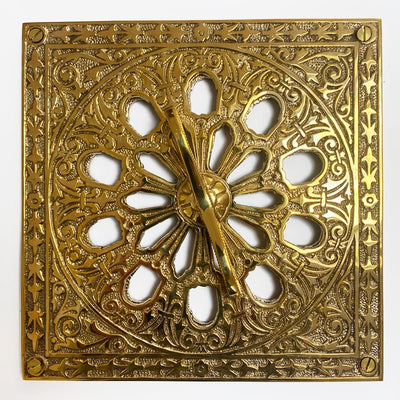
Do I need an air vent for a wood burning stove? If I do not bother?
Buying & DIY

Knowledge Tree: Process of buying and installing a wood burning stove
Buying & DIY
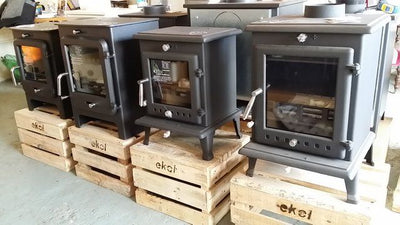
Chinese wood burners – should I buy one or are they all crap?
Buying Guides

What else do I need to buy to install a wood burning stove?
DIY Guides

Infographics for wood burning stove purchase and install
Infographics
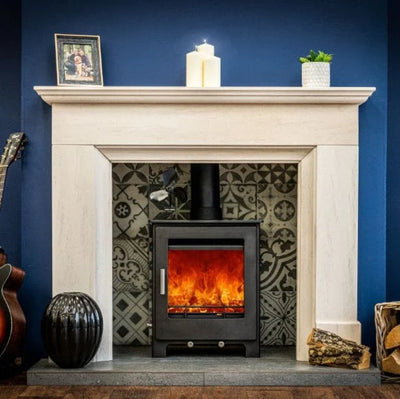
Wood burning or multifuel stove? A stove fitter decides.
Buying Guides
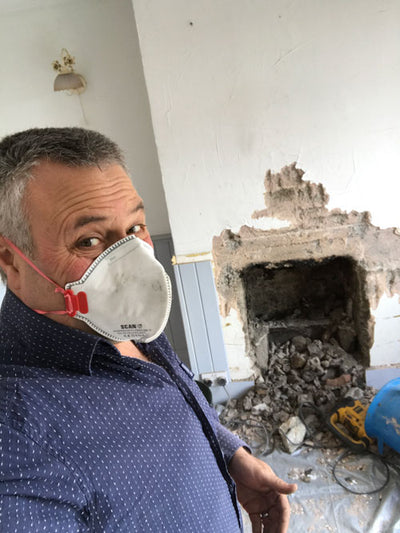
A few words from Julian
Buying & DIY
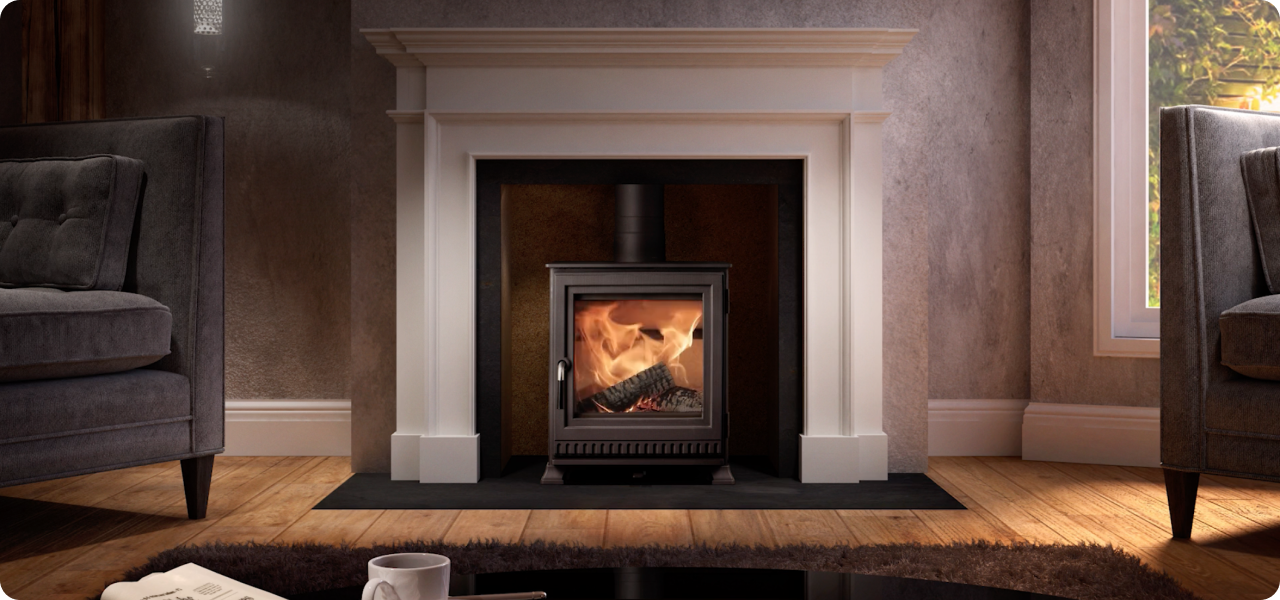
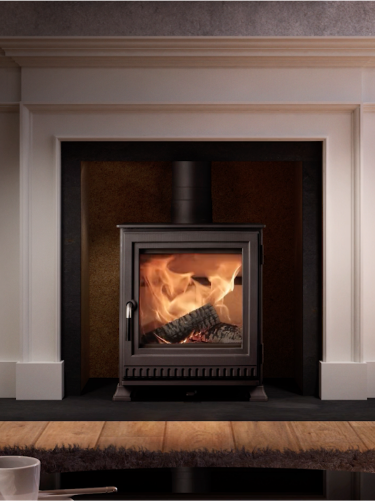
Find my perfect stove
Answer 3 simple questions and we will show you the best Stoves for your space.

